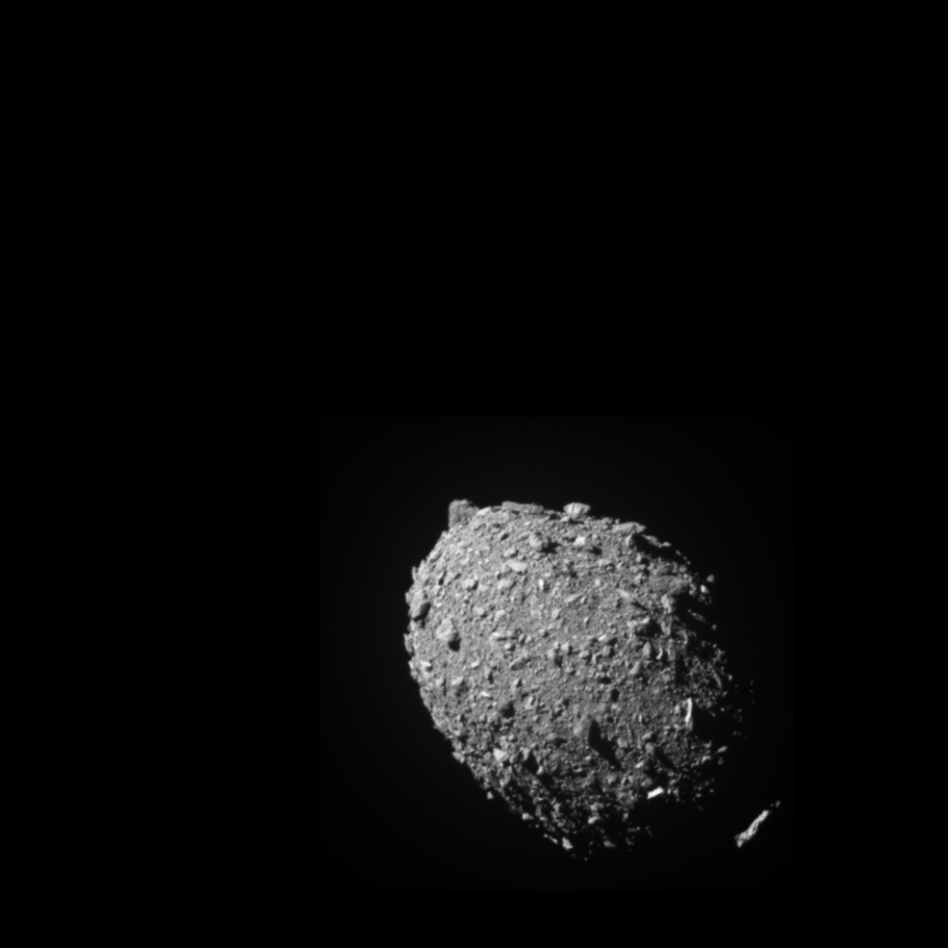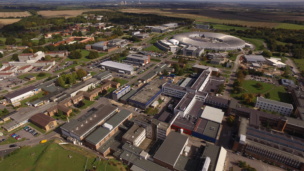At last, justice for the dinosaurs.
Last night, NASA’s first planetary defense mission ended with a bang. Years in the making, the Double Asteroid Redirection Test (DART) mission smashed into the asteroid Dimorphos.
With DART, NASA hopes to test whether it would be possible to protect our pale blue dot from potential oncoming planet-killing asteroids down the road.
Rewind the tapes
NASA launched the four-foot-wide spacecraft back in November with ambitions to knock an unsuspecting asteroid just slightly off its orbital path. To reach its target, the little DART that could traveled 6.8 million miles over 10 months.
It wasn’t easy to predict how Dimorphos’s trajectory would change upon impact. We didn’t really know the structure of the asteroid.
- If it was solid, dense, and smooth—like a billiard ball—it’d be easier to predict and likely slow more in its orbit.
- If it’s a loosely constructed pile of rubble—the more likely scenario—then Dimorphos would absorb more of the impact in a less predictable way.
The best guess was that the kinetic impact would shorten Dimorphos’ orbit by about ten minutes, but there was no way to know for sure without crashing DART into it and watching what happened.
What we know
Dimorphos is an asteroid roughly the width of a football field in orbit around a larger asteroid, Didymos. Until last night, Dimorphos completed an orbit around Didymos every 11 hours and 55 minutes. That may have changed now.
DART crashed into the asteroid almost perfectly head-on with respect to the asteroid’s orbital velocity at a speed of 14,000 miles per hour. It hit the asteroid about 17 meters away from the impact point picked out by the research team—a bullseye, by NASA standards.
The DART craft itself is no more. It was blown to smithereens upon impact, bravely sacrificing itself for Earth’s sake. Now, researchers are relying on observations from ground telescopes and LICIACube. The free-flying cubesat contains an auxiliary camera. It’s hovering about 55 km away from the asteroid, helping to shape our understanding of what exactly happened right of kaboom.
What we don’t know
It’s only been ~14 hours since the impact, which means that so far, Dimorphos has only completed one additional rotation around Didymos. The DART team back at NASA will continue to monitor the asteroid’s adjusted orbit for at least the next two months and draw conclusions about the efficacy of the spacecraft smash method of planetary defense.
In the coming days and weeks, NASA researchers will observe the binary asteroid system with ground telescopes and slowly receive image transmissions from LICIACube, a camera that deployed from the spacecraft before impact to document it. The team will have more information about the ejecta from the crash, the structure of the asteroid, and the potential changes in Dimorphos’ orbit in the days and weeks to come.




